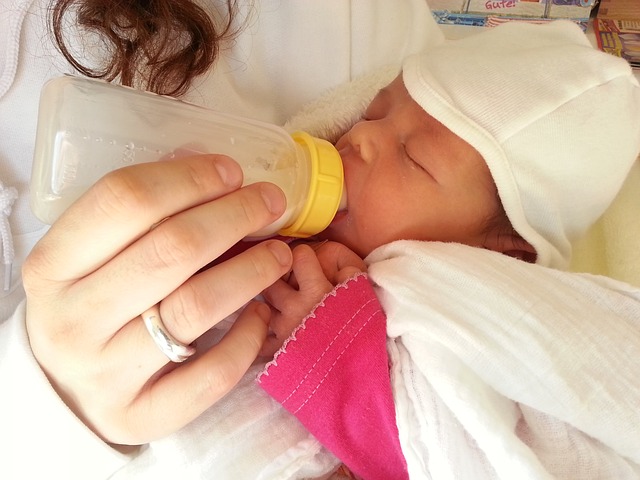Bottle feeding a baby can be a cozy bonding experience between parents and their little one. To make it comfortable several factors play a role, including the feeding environment, the type of bottle, and understanding the baby’s unique feeding needs. By paying attention to these details, parents can create a positive and soothing experience for both the baby and themselves. Here’s how parents can make bottle-feeding enjoyable and comfortable for their little ones.
Choose the Right Bottle for Your Baby
Selecting the right bottle is key to a smooth feeding experience. Since babies have different preferences, parents should consider factors such as bottle shape, nipple size, and material. Some bottles are designed to reduce air intake, which can help prevent colic and gas. Additionally, bottles with easy-to-grip designs can make feeding easier for both the baby and the parent. Opting for the best baby bottles for gifting is an excellent way to provide loved ones with a thoughtful and practical gift, especially if they are new to parenting.
Create a Calm and Quiet Feeding Space
Setting up a quiet, comfortable space for feeding is crucial to helping the baby stay focused and relaxed during mealtime. Bright lights, loud noises, and sudden distractions can make the baby uneasy and disrupt feeding. A calm environment helps babies feel secure, allowing them to enjoy their meals in peace. Parents may find that dim lighting and a comfortable chair can enhance the experience, creating a warm, cozy atmosphere that promotes bonding.
Use a Comfortable Feeding Position
A comfortable position is essential for both the parent and the baby during feeding. Supporting the baby’s head and neck helps them feel safe and allows them to focus on feeding. Holding the baby at a slight angle, rather than lying completely flat, can also reduce the chance of choking or ear infections. Parents should adjust their posture to prevent strain and find a position to hold the baby securely while maintaining their comfort throughout the feeding session.
Observe Baby’s Hunger and Fullness Cues
Every baby has unique hunger and fullness cues, and learning these signals can make bottle-feeding much more comfortable. By observing signs of hunger, like sucking on hands or turning toward the bottle, parents can offer the bottle at the right time. Knowing when the baby is full, such as when they turn away from the bottle or stop sucking, can prevent overfeeding. Responding to these cues helps establish a rhythm that suits the baby’s natural needs, promoting a more satisfying feeding experience.
Choose a Bottle That Reduces Colic and Gas
Some babies are more prone to colic and gas, making feeding uncomfortable. Choosing a bottle that minimizes air intake can help reduce these issues. Dr. Talbot’s baby bottles are designed with anti-colic features that help prevent air from mixing with milk, ensuring a more comfortable feeding experience. For babies who experience colic, these bottles can make a significant difference, allowing feeding time to be more enjoyable for both the baby and the parents.
Practice Safe and Easy Burping Techniques
Burping is an important part of bottle-feeding, as it helps release any air the baby may have swallowed. Parents can make feeding more comfortable by gently burping the baby midway through and at the end. Holding the baby upright and patting their back gently can encourage burping, preventing gas buildup and discomfort. Finding the right burping technique for the baby can make a noticeable difference in their comfort, ensuring they feel content and relaxed after each feeding.
Maintain a Consistent Feeding Routine
Consistency helps babies feel secure, as they thrive on routine. Establishing a regular feeding schedule allows the baby’s body to adapt, leading to better digestion and a more predictable feeding rhythm. A routine also helps parents stay organized, ensuring they are prepared for each feeding. Over time, babies become accustomed to the schedule, making feeding a familiar and comfortable part of their day.
Keep Bottles Clean and Safe for Feeding
Hygiene is crucial when it comes to bottle-feeding. Keeping bottles and nipples clean reduces the risk of bacteria, ensuring the baby’s food is safe. Washing bottles with hot, soapy water and regularly sterilizing them can keep germs at bay. Parents should inspect bottles for any signs of wear or damage, as cracked or discolored bottles may not be safe for use. A clean feeding experience contributes to the baby’s health and comfort, allowing them to enjoy each feeding session with peace of mind.
Creating a comfortable bottle-feeding experience involves thoughtful preparation, from selecting the right bottle to establishing a calm feeding space. By focusing on the baby’s comfort, learning their feeding cues, and maintaining a routine, parents can make bottle-feeding a pleasant and nurturing time for both themselves and their little ones. These simple steps help foster a positive feeding experience, strengthening the bond between parent and baby and ensuring their well-being.




